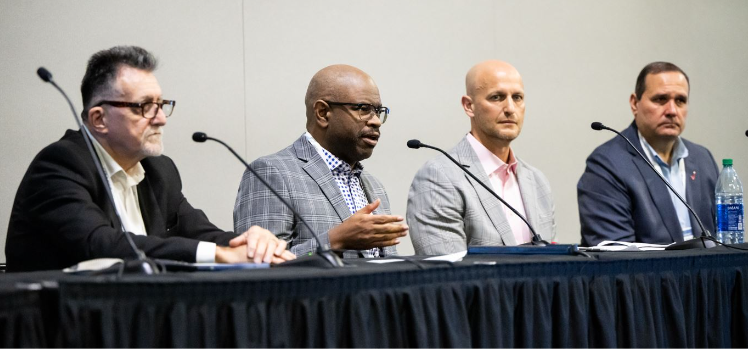Connect (X) 2024
Small cells are just like macrocells, only smaller. Instead of being installed on towers, mobile network operators mount small cell radios and antennas on street furniture such as light poles, utility poles or infrastructure provider structures. Fiber connections provide backhaul and the local utility supplies the power. In a WIA Connect(X) 2024 panel last week titled, ‘Densifying the 5G Network with Small Cells,’ panelists discussed the growing need for small cells in 5G networks and some of the challenges in getting them deployed.
“It’s rarely about coverage, it’s about capacity for us,” says Richard Bolt, Verizon (NYSE: VZ) Sr. Director Engineering for Georgia/Alabama. He says that Verizon has a large, small cell deployment in metro Atlanta ranging from 5G ultra wideband to 4G low band for macrocell offload, capacity augments and fixed wireless access. “Depending on the purpose, they’re designed a little differently,” he says. Common challenges include siting, fiber connectivity and power. There is typically no battery backup at small cells. And when street poles get hit by cars, it can take two to four weeks to replace those. “That’s a problem for customers that rely on their fixed wireless connections,” Bolt says.
Eli Elbaum, Managing Counsel, Government Relations at Crown Castle (NYSE: CCI) explains, “We’re a [shared] infrastructure provider. We build the infrastructure on behalf of the carriers including Verizon.” He says that getting small cells deployed involves dealing with various municipalities at different levels, including the permitting team. Getting approval typically relates to fees, timing, batching applications, and how many can get reviewed and approved at once.
Elbaum points out that the FCC Small Cell Order was intended to streamline the process, but municipalities often exercise their own regulations. He refers to recent litigation with a municipality in which Crown Castle prevailed because “we were able to demonstrate the need” for added coverage and capacity, even though the municipality pushed back at first.
Bolt says, “We actually own the radios and the antenna equipment. Crown provides the poles and the infrastructure in those cases where we use that kind of leased infrastructure. In some cases, Verizon owns those small cells outright, so we have a blend of the two.” On fiber access, if Crown Castle is providing turnkey solutions for Verizon, then Crown owns the fiber. If Verizon owns the small cells, the backhaul could be from some other third party or even Verizon-owned fiber.
According to Keith Williams, Telecom Colocation Manager at Georgia Power, the utility works with the carriers like Verizon allowing them to attach to the utility’s lighting and distribution infrastructure. “We pride ourselves that we want to be part of the solution, but there are a lot of utilities that will not open up their lighting assets or other assets. They’ll just do what’s required from the FCC perspective,” he says.
Williams explains that small cells are powered from the lighting circuit that’s also powering the light, thus “minimizing a lot of make-ready work.” A single power connection is used for a small cell although many poles can host more than one carrier.
The biggest challenge for a utility is often juggling between multiple regulatory bodies that have conflicting interests or conflicting rules to follow. One big issue with the jurisdiction is aesthetics. “They want the technology, but they want it to blend in,” Williams says.
He says Georgia Power will make modifications to lighting infrastructure using concealed poles so that aesthetically it blends in. “That adds cost but the assets are regulated, and ratepayers paid to have those assets there,” Williams explains.
By John Celentano, Inside Towers Business Editor





Reader Interactions